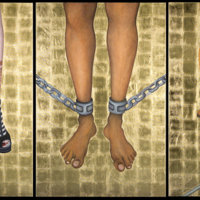
House Slave - Field Slave: A Portrait of Contemporary Slavery
'House Slave - Field Slave: A Portrait of Contemporary Slavery' was created in 2007 by Nicola Green in collaboration with Anti-Slavery International and first exhibited at Dulwich Picture Gallery. The artwork explored the concept of contemporary slavery and the stories of those still enslaved. The exhibition consisted of a large 'altarpiece' scale triptych set alongside artefacts of contemporary slavery from the International Slavery Museum and photos and text from Anti-Slavery International. It was later exhibited as part of Haringey's Black History Month at Bruce Castle Museum in 2010. The triptych is now in the permanent collection at the International Slavery Museum in Liverpool. Workshops were held at Dulwich Picture Gallery, The Prince’s Drawing Clubs, and International Slavery Museum in which students developed their skills in reading a work of art as a narrative, and responded by creating artworks that told their own personal story.
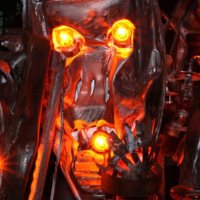
The Freedom! sculpture
The Freedom! sculpture was created by a group of Haitian artists to represent Haiti's struggle for freedom and human rights. It was commissioned in 2007 by a collaboration of the international development charity Christian Aid and National Museums Liverpool to mark the bicentenary. The Freedom! sculpture is made from recycled objects such as metal car parts and junk found in the slums of Haiti's capital, Port-au-Prince. It was created by sculptors Eugène, Céleur and Guyodo from Atis Rezistans in collaboration with the Haitian artist Mario Benjamin. The sculpture was first displayed at the Merseyside Maritime Museum in 2007 before touring to Stratford Circus Arts Centre in London, the Empire and Commonwealth Museum in Bristol and the Eden Project in Cornwall. It became a permanent exhibit in the International Slavery Museum when the venue opened on 23 August 2007 (Slavery Remembrance Day).
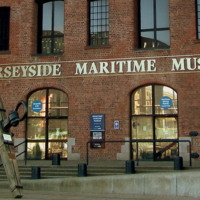
International Slavery Museum
The International Slavery Museum (ISM) is the first museum in the world to focus specifically on slavery, both historical and modern. Managed by National Musuems Liverpool, it opened to great acclaim in 2007 and has since welcomed over 3.5million visitors. Through its displays and wide-ranging events programme, the ISM aims to tackle ignorance and misunderstanding in today’s society by exploring the lasting impact of the transatlantic slave trade around the world. On entering the ISM, visitors immediately arrive in a space designed to provoke thoughts and discussion- the walls are etched with powerful quotations from historical figures and contemporary activists, many from the African diaspora. There is a display of West African culture, designed to showcase the breadth and depth of African civilisation before the devastation caused by the transatlantic slave trade, which includes examples of textiles, musical instruments and other ethnographic material. The display then goes on to look at the trade itself; the logistics, the processes and who benefitted on one hand, whilst also exploring the experience of the enslaved through multisensory interpretive techniques, including an emotive film of what the Middle Passage may have been like. All of these displays are supported by the rich, local archival collections, drawing on Liverpool’s own history as a prosperous, slave-trading port. Moving forward along a chronological timeline, the exhibition then covers abolition, significantly beginning with the acts of resistance from the enslaved themselves, through to organised abolition movements and then discussing the continued fight for freedom through the post-emancipation then civil rights era, right into the twenty-first century. The lasting legacies of the trade are thoroughly examined, from racism and the under-development of African countries, to the spread of African culture and diverse nature of Liverpool’s communities. A unique feature of the ISM is its ‘Campaign Zone’, opened in 2010, which houses temporary exhibitions just off the main gallery space. These are frequently run in conjunction with campaign organisations and usually focus on aspects of modern slavery, highlighting to visitors that it is very much still a live issue and not one that has been relegated to history. Recent exhibitions in this space have included 'Broken Lives' organised with the Daalit Freedom Network and 'Afro Supa Hero' with artist Jon Daniels.
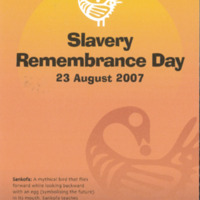
Slavery Remembrance Day in Liverpool
Slavery Remembrance Day, as designated by UNESCO, took place in Liverpool on 23 August 2007. The day was commemorated with a series of events, marked first by a multi-faith act of worship at Liverpool's Parish Church of St Nicholas. A traditional African libation ceremony, calling on ancestors to bless the event, took place on the city's waterfront at Otterspool Promenade. A programme of music and drama showcased Black culture and heritage around the themes of life in Africa, the Middle Passage and the legacies of transatlantic slavery. The International Slavery Museum at the Albert Dock had its official opening on the same day. The symbol of the day was the Sankofa, a mythical African bird that files forward while looking backward.
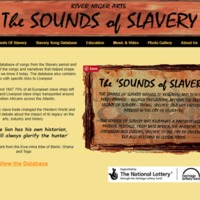
The Sounds of Slavery
The Sounds of Slavery was a project by the performance and visual arts group River Niger Arts to research, record and develop a performance-related programme around the musical heritage and legacy of slavery. The project took particular interest in these themes in relation to the City of Liverpool, but also addressed them in global terms. The project created a database of songs and narratives from the period of slavery. Members of the River Niger Orchestra also performed at a Sounds of Slavery performance at Liverpool Hope University. Some of the songs performed included 'The Chase', 'No More Auction Block' and the African American spiritual 'The Jubilee Song'. The project was accompanied by a series of performance and visual arts education workshops with schools.
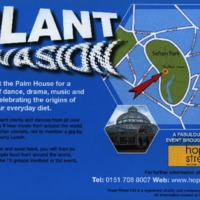
Plant Invasion
Plant Invasion was a family event of dance, drama, music and design, celebrating the diverse origins of food in everyday diets. The project looked at the origins of tea, and at the trade routes through Liverpool associated with sugar, coffee, tobacco, rice, cotton and enslaved peoples. The festival was organised by the Liverpool charity Hope Street Ltd, and took place at the Palm House in Liverpool's Sefton Park. Fifteen community groups prepared performances and displays based on their investigations into the journeys of non-indigenous plants and the routes they took in arriving in the UK.
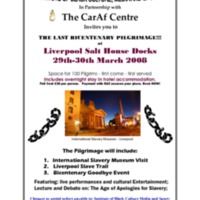
Last Bicentenary Pilgrimage
The ‘Last Bicentenary Pilgrimage’ trip to Liverpool was organised by the Institute of Black Culture Media and Sport, in partnership with the CarAf Centre, who provide educational, social and cultural activities for disadvantaged parents and young people. Members of the local Camden community were taken on a two-day family learning trip to Liverpool, to mark the end of the bicentenary with a goodbye ceremonial event and a visit to the International Slavery Museum. The event was supported by the London Borough of Camden Council.
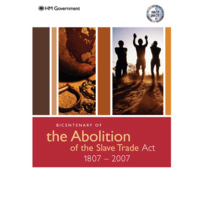
Bicentenary of the Abolition of the Slave Trade Act 1807-2007
The official publication from the British Government in response to the bicentenary included a message from Prime Minister Tony Blair. It set out the history of transatlantic slavery and resistance to it, and featured a calendar of upcoming events for 2007 relating to slavery and abolition. The publication also detailed contemporary efforts to end modern slavery. Later in 2007, 'The way forward: bicentenary of the abolition of the Slave Trade Act 1807-2007' reflected on some of the commemorative activity that had taken place in Bristol, Hull, Liverpool, London and Greater Manchester. With a foreword by the new Prime Minister, Gordon Brown, the theme of the publication was 'Reflecting on the past, looking to the future' and it linked efforts for the abolition of historical and contemporary slavery. The publication also looked to how to tackle inequality and poverty in the UK, Africa and the Caribbean.
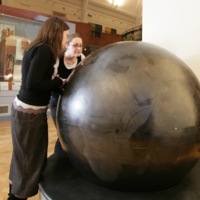
Blue Earth 1807-2007
The sculpture Blue Earth 1807-2007 by African artist Taslim Martin was permanently installed in the newly updated African Worlds Gallery at the Horniman Museum in 2007, to mark the bicentenary. The large iron globe, inscribed with the 18th century image of the slave ship Brookes, traces the routes along which enslaved Africans were transported to the New World, alongside the movement of the products of enslaved labour. The major British ports of Liverpool, London and Bristol are depicted, as well as ports in West Africa and some of the destination ports in North America, the Caribbean and South America. Visitors are encouraged to spin the globe to view slave routes across the world. In 2007-2008, the Horniman Museum also hosted 'La Bouche du Roi' by Romuald Hazoumé.
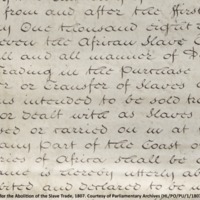
BOUND
Curated by Predrag Pajdic, BOUND was an exhibition of works by international contemporary artists representing personal perspectives on the physical and psychological impact of slavery on humanity, in historical and modern contexts. BOUND incorporated archival material, conceptual work, photography, video, live art performance, interventions and installations. It was a partnership project between the Open Eye Gallery, FACT (Foundation for Art and Creative Technology) and Tate Liverpool. The exhibition opened at Open Eye Gallery and then ran at various venues across Liverpool. Associated events included open table discussions, talks and film screenings.
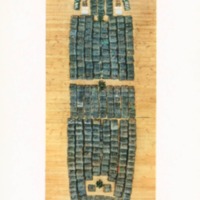
La Bouche du Roi
La Bouche du Roi was created by artist Romauld Hazoumé, who lives and work in the Republic of Benin, West Africa. The multi-media artwork is named after a place on the coast of Benin from where enslaved Africans were transported. It comprised 304 plastic petrol can 'masks', each representing a person, arranged in the shape of the woodcut of the Liverpool slave ship Brookes. The aroma of tobacco and spices are represented alongside the terrible smells of a slave ship. The artwork was accompanied by a film showing the motorcyclists who transport petrol illegally between Nigeria and the Republic of Benin. The cans and motorcyclists are metaphors for modern forms of enslavement and resistance. First exhibited at the British Museum in London, La Bouche du Roi toured to the following venues during 2007-9: Ferens Art Gallery in Hull, International Slavery Museum in Liverpool, Bristol's City Museum and Art Gallery, Laing Art Gallery in Newcastle, and the Horniman Museum in London.
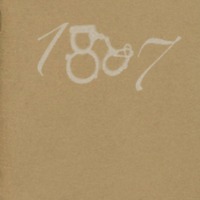
1807 and Tate
The industrialist Sir Henry Tate was the early benefactor of the Tate Collection, rooted in the art of the 18th and 19th centuries. Tate's fortune - much of which was spent on philanthropic initiatives in Britain - was founded on the importation and refining of sugar, a commodity inextricably linked to slave labour in the Caribbean. There were a number of initiatives across the Tate galleries to explore these connections. 'Tracks of Slavery' at Tate Britain displayed a selection of images from the Tate's collections which provided a commentary on the relationship of British society with slavery. Displays at Tate Modern included a selection of new acquisitions linked by their treatment of issues arising from slavery and oppression. Tate Liverpool exhibited paintings by Ellen Gallagher. Special events included Freedom Songs at Tate Britain (workshops to create poetry and music by exploring themes of slavery and freedom) and a discussion at Tate St Ives looking at the links between Cornish maritime traditions, the slave trade and the Caribbean.
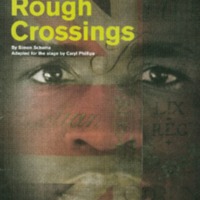
Rough Crossings
Historian Simon Schama's true story of a plantation slave (Thomas Peters) and a British naval officer (John Clarkson) and their search for freedom at the time of the American War of Independence. Schama's account was adapted for the stage by Caryl Phillips, directed by Rupert Goold and produced by the Headlong Theatre Company. It explores ideas of racial identity, home and freedom, as former slaves who fought for the British army are led across the Atlantic to the newly-created province of Sierra Leone. The play toured West Yorkshire Playhouse, Birmingham Repertory Theatre, Liverpool Everyman and Lyric Hammersmith.
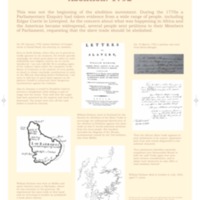
Dumfries and Galloway and the Transatlantic Slave Trade
An exhibition exploring the connections between the Scottish region of Dumfries and Galloway and the transatlantic slave trade toured Dumfries Museum, the Stewartry Museum in Kirkcudbright and Stranraer Museum. At each venue, the exhibition was accompanied by displays of material and a lecture. The catalogue of new research to supplement the exhibition by Frances Wilkins set out to correct misunderstandings about the role of people from the region in the transatlantic slave trade, to prove a history of connections independent of Glasgow or anywhere else. Evidence suggests that men from smaller towns such as Dumfries and Kirkcudbright were involved in the transatlantic slave trade as merchants, slave traders or plantation owners. For example, in the late 18th century, plantation supplies were sent from Kirkcudbright to the island of Grenada; the vessels returned with rum, sugar, and cotton wool.
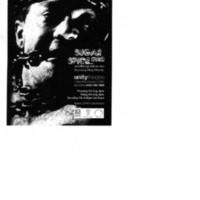
SUGAR and SPICE and things not so nice
A play directed by Hilary Westlake, performed at Unity Theatre in Liverpool, in collaboration with Hope Street Ltd, a community arts centre. Using film, text and movement, the performance investigated how the industry of slavery continues to flourish in modern times, not only globally and nationally, but also locally.
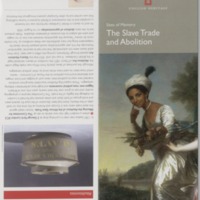
Sites of Memory: The Slave Trade and Abolition
The Sites of Memory project was the first research by English Heritage (now Historic England) to provide an overview for the public of the buildings, memorials and grave sites across England that reflects the role of the slave trade in British history, and resistance to it. The project explored the history of Black people in Britain during the 18th and 19th centuries by exploring the stories behind the historic built environment of local streets, buildings and landmarks. The research (by historians Angelina Osborne and S. I. Martin, on behalf of English Heritage) also identified sites associated with the slave trade and plantation wealth, and with the abolitionists who campaigned for an end to slavery. English Heritage also made recommendations for new listings for historic sites that mark the Black presence.
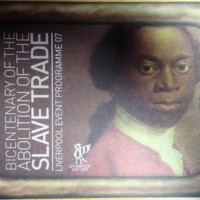
Liverpool Event Programme 07
Liverpool hosted a city-wide programme of activities and projects to commemorate the bicentenary, as part of events to mark the city's 800th birthday. The events aimed to celebrate the African Diaspora and support works by artists of African descent. They included: LEAP, an annual contemporary dance festival featuring African dance companies; a performance of Mighty Diamonds - Reggae Legends at the Philharmonic Hall; the Roscoe Lectures; the Brouhaha International Carnival, celebrating resistance, rebellion and abolition; the Africa Oyé Music Festival at Sefton Park; the Bound exhibition at Open Eye Gallery, showing works representing personal perspectives on the physical and psychological impact of slavery on humanity; and many other lectures and debates. There was also a slavery trail around the city.
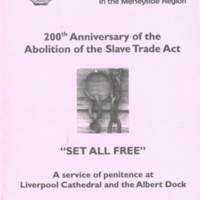
A service of penitence at Liverpool Cathedral and the Albert Dock
A multi-faith service of penitence and remembrance was held at Liverpool Cathedral on 24 March 2007 by Churches Together in the Merseyside Region. Some material in the service drew upon resources produced by Set All Free, the project of Churches Together in England. A musical welcome was offered by African drummers and the Philharmonic Gospel Choir. A procession to the waterfront at Albert Dock followed the service, where the Petals of Penitence Liturgy took place.
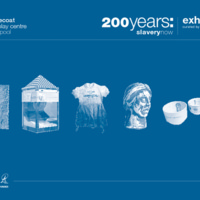
200 Years: Slavery Now
Bluecoat Display Centre is a contemporary craft and design gallery in Liverpool. The 200 Years: Slavery Now exhibition aimed to draw attention to modern slavery, both within the UK and in the wider international context. It brought together ten artists whose work reflected these concerns, and who were committed to highlighting the existence of slavery today through the creation of artefacts and the development of personal narratives. Materials used included ceramics, mixed media installations and textiles. Some of the themes covered included the exploitation of migrant workers, sex trafficking, 'sweat shop' mass production, and commemorating the Middle Passage and the workers of Manchester's cotton mills. The exhibition was curated by Professor Stephen Dixon, with the support of the Craft and Design Research Centre, MIRIAD, at Manchester Metropolitan University.
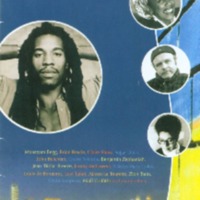
WOW2007
In 2007 Liverpool's annual Writing on the Wall arts festival explored the legacy of slavery through words, music, lyrics, song, dance and discussion. Authors, campaigners and social commentators explored the themes of the bicentenary and Liverpool's 800th birthday. The festival aimed to celebrate diversity and promote inter-cultural tolerance. Speakers included one of the nine Britons detained in Guantanamo, Cuba. Among the performers was dub poet Benjamin Zephaniah joined by Jean 'Binta' Breeze and Levi Tafari, and featuring the MDI African Dancers for an 'extravaganza of rhythm and rhyme' at the Royal Philharmonic Hall. Liverpool Young Writers was launched by Writing on the Wall in 2007. Members have recently performed at Slavery Remembrance Day and the International Slavery Museum.